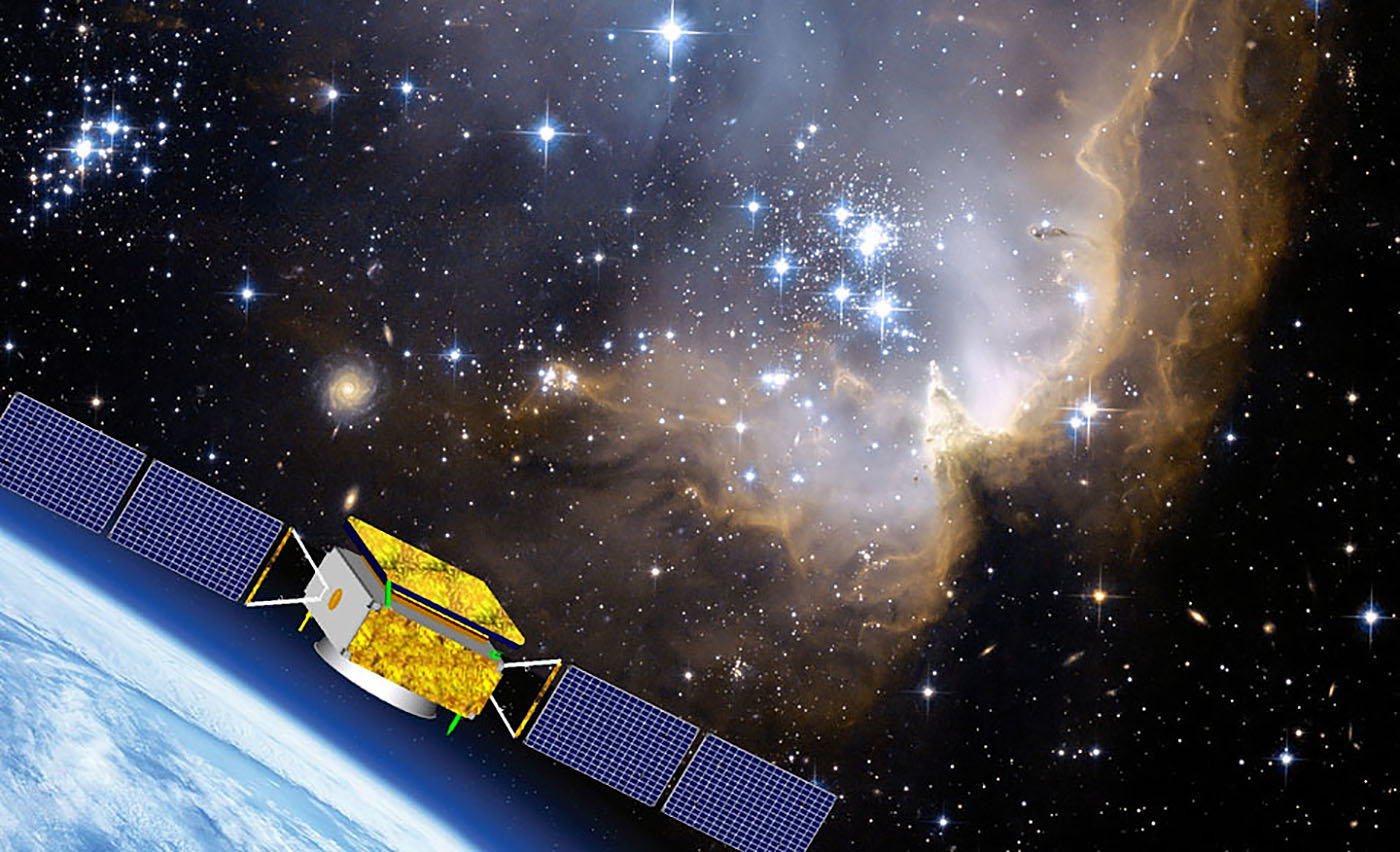 The scientific journal Science Advances publishes today an important result of the DAMPE experiment (DArk Matter Particle Explorer), in orbit around the Earth since December 2015. The study reports the direct measurement of the flow of cosmic protons up to high energies, in the range of 100 TeV (approximately 100,000 times the energy corresponding to the resting mass of a proton).
The scientific journal Science Advances publishes today an important result of the DAMPE experiment (DArk Matter Particle Explorer), in orbit around the Earth since December 2015. The study reports the direct measurement of the flow of cosmic protons up to high energies, in the range of 100 TeV (approximately 100,000 times the energy corresponding to the resting mass of a proton).
Protons are the main component of cosmic rays and, to date, no apparatus had ever directly measured the intensity of their flow with such accuracy and at such high energies. In detail, DAMPE has found an unexpected behavior: the flow of protons, which decreases continuously with increasing energies, to about 10 TeV has a much more marked attenuation than expected. Other experiments have previously explored this energy region but with less precise results due to both statistical and systematic uncertainty.
DAMPE was launched into orbit in December 2015 by the Chinese Space Agency aboard the Long March 2D vector with the scientific goal of searching for dark matter by studying high-energy astroparticles, in particular the flow of cosmic rays that comes incessantly to our planet. The experiment is an international collaboration among the National Institute of Nuclear Physics (INFN) - with the dividions of Perugia, Bari and Lecce and the GSSI - the Chinese Academy of Sciences (CAS), the University of Perugia , Bari and Salento, and the University of Geneva. The collaboration is led by the Purple Mountain Observatory (PMO) of Nanjing. the DAMPE collaboration counts more than 100 partecipants among researchers, technicians and PhD students.
- This observations provide valuable information on the origin of cosmic rays and their acceleration and propagation processes in our galaxy -, explains Piergiorgio Fusco (University and INFN Division of Bari). - Such mechanisms - , adds Ivan De Mitri (Gran Sasso Science Institute and Gran Sasso National Laboratory) – can accelerate charged particles up to energies much greater than those reached by the most powerful accelerators ever built. Even though, they are mostly unknown and currently studied with apparatus in space, at soil, under the ice of the south pole and in the sea depths ".
DAMPE, which is able to measure with great precision the arrival direction of cosmic particles and photons and to distinguish the nuclear species that make up cosmic rays, has already achieved other important results, such as the discovery of a sudden decrease in the flow of cosmic electrons and positrons at about 1 TeV (Nature 552, 63 of 2017) and the direct measurement of the distribution of cosmic nuclei from helium to nickel.
"All these measures", states Paolo Bernardini (University of Salento and INFN division of Lecce), head of the analysis group, "constitute new elements that are part of the complex and still incomplete picture of knowledge of the cosmic radiation, providing indications for understand its origin and propagation mechanisms. Moreover, the observations of DAMPE are fundamental in the search for particles coming from the dark matter, that is hypothesized to pervadethe galaxy, and in the study of the sources of galactic and extragalactic gamma rays ”. image credit: dampe collaboration
website http://dpnc.unige.ch/dampe/
video http://dpnc.unige.ch/dampe/video/dampe_chinese_video.mp4
website Science Advances:https://advances.sciencemag.org/
Media Contacts
INFN Communications Office: Eleonora Cossi, This email address is being protected from spambots. You need JavaScript enabled to view it., +39.06.68400364- +39.06.6868162






